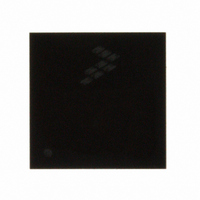MC9S08GT8ACFDE Freescale Semiconductor, MC9S08GT8ACFDE Datasheet - Page 30

MC9S08GT8ACFDE
Manufacturer Part Number
MC9S08GT8ACFDE
Description
IC MCU 8K FLASH 1K RAM 48-QFN
Manufacturer
Freescale Semiconductor
Series
HCS08r
Datasheet
1.MC9S08GT8ACFBER.pdf
(300 pages)
Specifications of MC9S08GT8ACFDE
Core Processor
HCS08
Core Size
8-Bit
Speed
40MHz
Connectivity
I²C, SCI, SPI
Peripherals
LVD, POR, PWM, WDT
Number Of I /o
39
Program Memory Size
8KB (8K x 8)
Program Memory Type
FLASH
Ram Size
1K x 8
Voltage - Supply (vcc/vdd)
1.8 V ~ 3.6 V
Data Converters
A/D 8x10b
Oscillator Type
Internal
Operating Temperature
-40°C ~ 85°C
Package / Case
48-QFN
Processor Series
S08GT
Core
HCS08
Data Bus Width
8 bit
Data Ram Size
1 KB
Interface Type
I2C/SCI/SPI
Maximum Clock Frequency
40 MHz
Number Of Programmable I/os
39
Operating Supply Voltage
3.6 V
Maximum Operating Temperature
+ 85 C
Mounting Style
SMD/SMT
3rd Party Development Tools
EWS08
Development Tools By Supplier
M68EVB908GB60E, M68DEMO908GB60E
Minimum Operating Temperature
- 40 C
On-chip Adc
8-ch x 10-bit
For Use With
M68DEMO908GB60E - BOARD DEMO MC9S08GB60M68EVB908GB60E - BOARD EVAL FOR MC9S08GB60
Lead Free Status / RoHS Status
Lead free / RoHS Compliant
Eeprom Size
-
Lead Free Status / Rohs Status
Lead free / RoHS Compliant
- Current page: 30 of 300
- Download datasheet (2Mb)
Pins and Connections
2.3.5
IRQ is a dedicated pin with both pullup and pulldown devices built in. This pin has no output capabilities.
After a system reset, the IRQ pin is disabled and must be enabled before use. See
External Interrupt Request
For EMC-sensitive applications, an external RC filter is recommended on the IRQ pin. See
an example.
2.3.6
The remaining 36 pins are shared among general-purpose I/O and on-chip peripheral functions such as
timers and serial I/O systems. (Three of these pins are not bonded out on the 44-pin package, five are not
bonded out on the 42-pin package, and 15 are not bonded out on the 32-pin package.) Immediately after
reset, all 36 of these pins are configured as high-impedance general-purpose inputs with internal pullup
devices disabled.
For information about controlling these pins as general-purpose I/O pins, see
Input/Output.” For information about how and when on-chip peripheral systems use these pins, refer to the
appropriate section from
30
1
PTA7–PTA0
PTB7–PTB0
PTC7–PTC4
PTC3–PTC2
PTC1–PTC0
PTD4–PTD3
PTD2–PTD0
PTE5
PTE4
PTE3
PTE2
PTE1–PTE0
PTG3
PTG2–PTG1
PTG0
See this section for information about modules that share these pins.
Port Pins
IRQ — External Interrupt Request Pin
General-Purpose I/O and Peripheral Ports
To avoid extra current drain from floating input pins, the reset initialization
routine in the application program should either enable on-chip pullup
devices or change the direction of unused pins to outputs so the pins do not
float.
KBIP7–KBIP0
ADP7–ADP0
SCL–SDA
RxD2–TxD2
TPM2CH1–TPM2CH0, TPM2CLK
TPM1CH2–TPM1CH0, TPM1CLK
SPSCK
MISO
MOSI
SS
RxD1–TxD1
EXTAL–XTAL
BKGD/MS
Alternate Function
Table
Pin” for more details.
2-1.
MC9S08GT16A/GT8A Data Sheet, Rev. 1
Table 2-1. Pin Sharing References
NOTE
Chapter 7, “Keyboard Interrupt (S08KBIV1)”
Chapter 14, “Analog-to-Digital Converter (S08ATDV3)”
Chapter 13, “Inter-Integrated Circuit (S08IICV1)”
Chapter 11, “Serial Communications Interface (S08SCIV1)”
Chapter 10, “Timer/PWM (S08TPMV2)”
Chapter 10, “Timer/PWM (S08TPMV2)”
Chapter 12, “Serial Peripheral Interface (S08SPIV3)”
Chapter 11, “Serial Communications Interface (S08SCIV1)”
Chapter 9, “Internal Clock Generator (S08ICGV4)”
Chapter 15, “Development Support”
Reference
Chapter 6, “Parallel
1
Section 5.4.2, “IRQ —
Freescale Semiconductor
Figure 2-5
for
Related parts for MC9S08GT8ACFDE
Image
Part Number
Description
Manufacturer
Datasheet
Request
R
Part Number:
Description:
Manufacturer:
Freescale Semiconductor, Inc
Datasheet:
Part Number:
Description:
Manufacturer:
Freescale Semiconductor, Inc
Datasheet:
Part Number:
Description:
Manufacturer:
Freescale Semiconductor, Inc
Datasheet:
Part Number:
Description:
Manufacturer:
Freescale Semiconductor, Inc
Datasheet:
Part Number:
Description:
Manufacturer:
Freescale Semiconductor, Inc
Datasheet:
Part Number:
Description:
Manufacturer:
Freescale Semiconductor, Inc
Datasheet:
Part Number:
Description:
Manufacturer:
Freescale Semiconductor, Inc
Datasheet:
Part Number:
Description:
Manufacturer:
Freescale Semiconductor, Inc
Datasheet:
Part Number:
Description:
Manufacturer:
Freescale Semiconductor, Inc
Datasheet:
Part Number:
Description:
Manufacturer:
Freescale Semiconductor, Inc
Datasheet:
Part Number:
Description:
Manufacturer:
Freescale Semiconductor, Inc
Datasheet:
Part Number:
Description:
Manufacturer:
Freescale Semiconductor, Inc
Datasheet:
Part Number:
Description:
Manufacturer:
Freescale Semiconductor, Inc
Datasheet:
Part Number:
Description:
Manufacturer:
Freescale Semiconductor, Inc
Datasheet:
Part Number:
Description:
Manufacturer:
Freescale Semiconductor, Inc
Datasheet:










